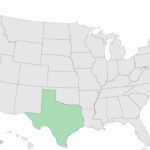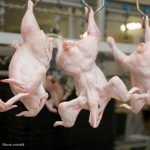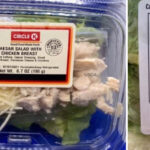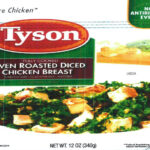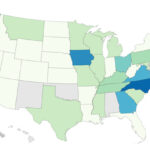The Tyson cooked chicken Listeria monocytogenes outbreak has ended with three people sick, three hospitalized, and one person dead, according to the Centers for Disease Control and Prevention (CDC). The outbreak was declared over as of September 10, 2021. The patient case count by state is: Delaware (1), and Texas (2). The patient age range was from 60 to 95 years. Illness onset dates ranged from April 6, 2021 to June 5, 2021. All three people were living in long-term care facilities or hospitals when they got sick. Tyson recalled ready to eat chicken products in relation to this outbreak. The recall was expanded once, and there was one secondary recall for Circle K chicken salads and sandwiches that was also expanded once. The chicken may also have been used to make deli … [Read more...]
September is Food Safety Education Month to Stay Healthy
September is Food Safety Education Month to keep you and your family healthy. This year the focus is on how to prevent food poisoning when cooking at home. First, following the four step recipe for food safety is crucial: Clean (wash your hands often, clean counters with hot soapy water, don't wash chicken or meat); Separate (keep raw meat, chicken, turkey, seafood, and eggs away from produce); Cook (cook foods to safe final internal temperatures and use a food thermometer); and Chill (refrigerate leftovers promptly). Then, you should focus on preventing Salmonella infections. Salmonella causes more foodborne illnesses in the United States than any other bacteria. Chicken is a major source of these illnesses, although outbreaks linked to ground beef have also … [Read more...]
Chicken and Salmonella is Focus of Consumer Reports Recommendations
With the new Salmonella outbreak linked to frozen raw breaded stuffed chicken breasts in mind, Consumer Reports is issuing their recommendations on the problem of chicken and Salmonella in this country. The article focuses on the tragic story of Noah C., a child sickened in the 2013 Foster Farms's chicken Salmonella Heidelberg outbreak that also sickened more than 600 Americans. The child suffered a severe infection that caused a brain abscess. He had to undergo brain surgery and faced, and still faces, a daunting recovery. The law firm of Pritzker Hageman, which underwrites Food Poisoning Bulletin, represented Noah and his family and obtained a $6.5 million verdict against Foster Farms, which attributed 30% of the fault to the huge poultry processor. Consumer Reports writes that … [Read more...]
Salmonella Outbreak Linked to Backyard Poultry Sickens 163 in 43 States
A Salmonella outbreak linked to backyard poultry has sickened at least 163 people in 43 states, according to the Centers for Disease Control and Prevention (CDC). Thirty-four people have been hospitalized because they are so sick. All people sickened by live poultry in this country in the last 10 years add up to almost 7,000 illnesses. The case count by state is: Arizona (2), Arkansas (2), California (9), Colorado (2), Connecticut (3), Florida (1), Georgia (9), Idaho (1), Illinois (3), Indiana (2), Iowa (11), Kansas (1), Kentucky (5), Louisiana (1), Maine (3), Maryland (3), Massachusetts (3), Michigan (4), Minnesota (3), Mississippi (4), Missouri (4), Montana (4), Nebraska (2), Nevada (1), New Hampshire (3), New … [Read more...]
